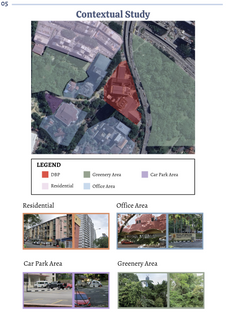ARCHITECTURE
HISTORY AND THEORY
ARC60804
PROJECT 1
PROJECT 1
ANALYSIS REPORT (25% GROUP)
PROJECT BRIEF
INTRODUCTION
The evolution of architecture, characterized by diverse traditions, regions, and stylistic trends, reflects a vibrant historical fabric. Despite this richness, historical buildings often face the threat of demolition for contemporary structures. To preserve this heritage, we aim to record, document, and analyze these buildings, presenting our findings through a poster and booklet.
OBJECTIVES
To analyze Malaysian architecture history, present chronological findings from literature and documents.
To familiarize students with research analysis , including assemblage, chronological indices, and composition.
To introduce visual thinking, form principles in Modern Malaysian architectural design.
TASKS
-
The student will research and analyze a chosen architectural structure from the given list.
-
Investigation and interpretation of selected buildings with graphics
-
Incorporate Augmented Reality Poster, featuring digital booklet, building interior, 3D model.


1.0 Discipline Specific Knowledge
5.0 Interpersonal Skills
The case study of Dewan Bahasa dan Pustaka has provided a valuable opportunity to bridge theoretical knowledge with practical application. By delving into this real-world example, I gained insights into how architectural theories manifest in the design and functionality of a significant structure.
It has been instrumental in fostering my understanding of collaborative work environments and harnessing the collective power of teams. The complexities involved in the architectural project highlighted the importance of effective communication, coordination, and leveraging the diverse skills within a team.
REFLECTION
Engaging in the case study of Dewan Bahasa dan Pustaka presented a multifaceted learning experience. During the initial site visit, encountering restricted access to the building prompted us to strategize and problem-solve. We brainstormed for solutions, demonstrating adaptability and resilience. Eventually, our collaborative efforts yielded success as we gained permission to enter and document the site comprehensively.
Simultaneously, managing multiple assignments demanded rigorous time management. Juggling diverse tasks required prioritization, effective communication within the team, and disciplined scheduling. Despite the initial setback and concurrent workload, the experience enhanced our project management skills. It underscored the significance of flexibility, perseverance, and teamwork in overcoming obstacles and achieving project goals.
Navigating these challenges also emphasized the real-world applicability of theoretical knowledge. The project not only enriched our understanding of architectural principles through the case study but also fortified our practical problem-solving capabilities.



































